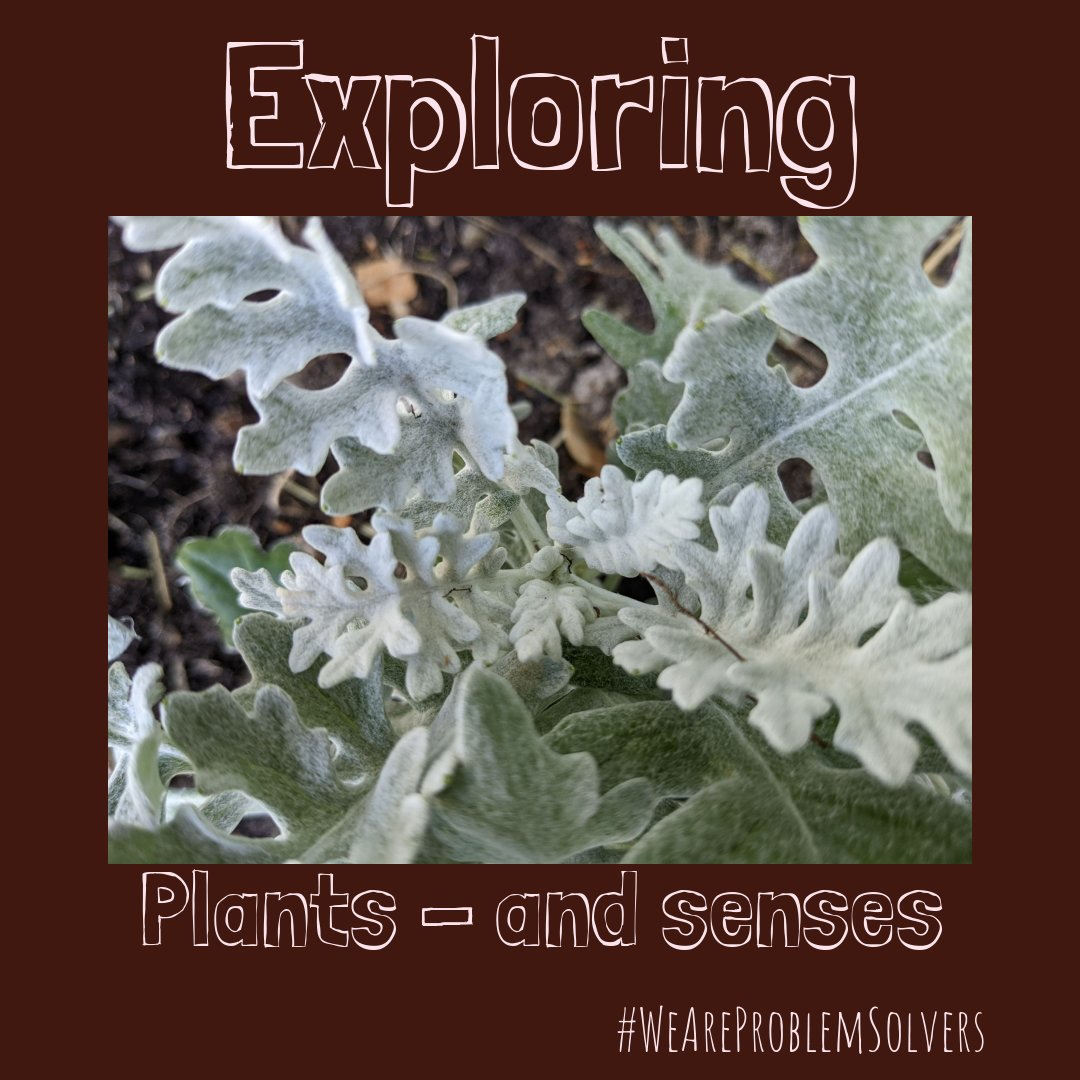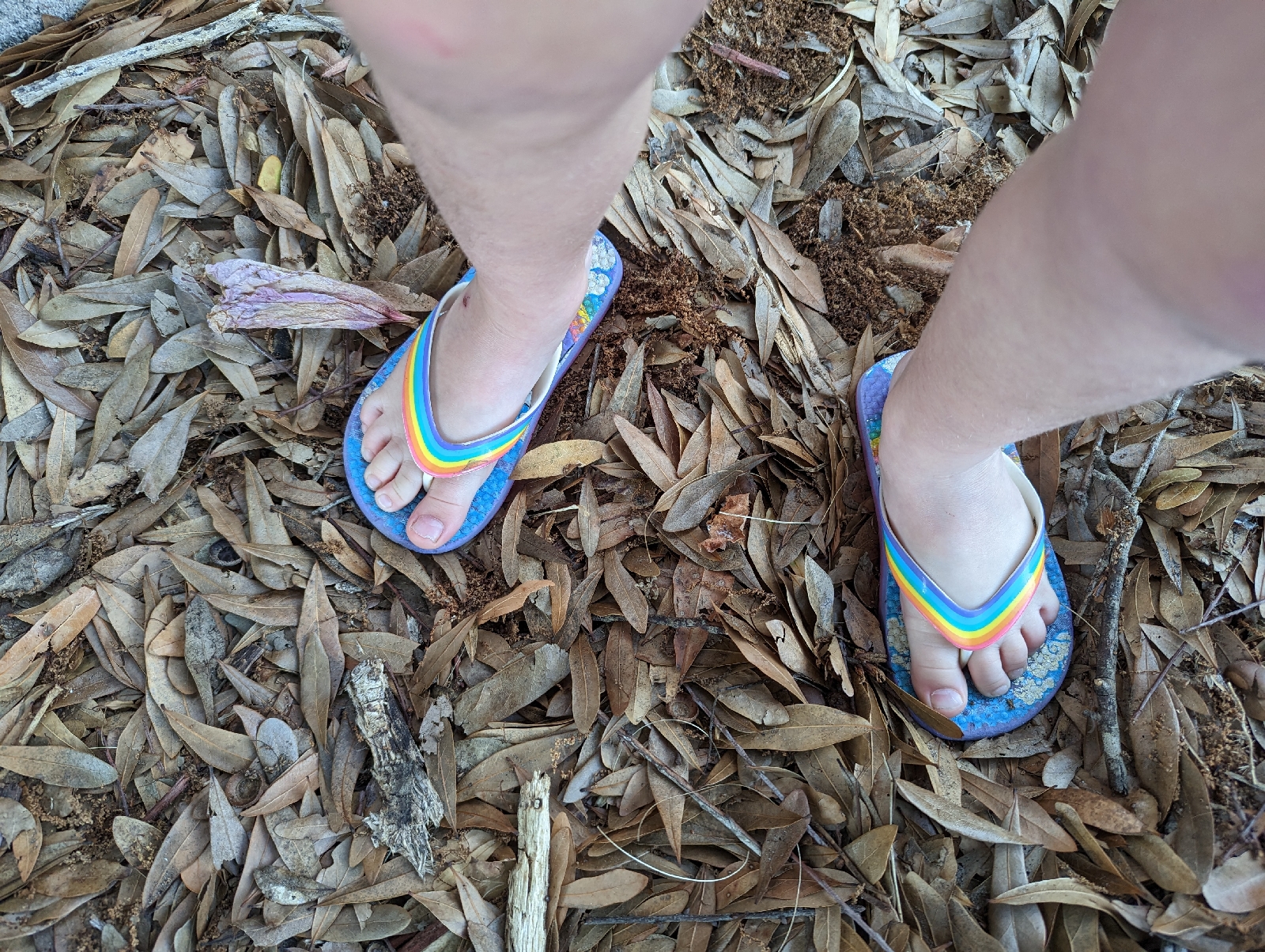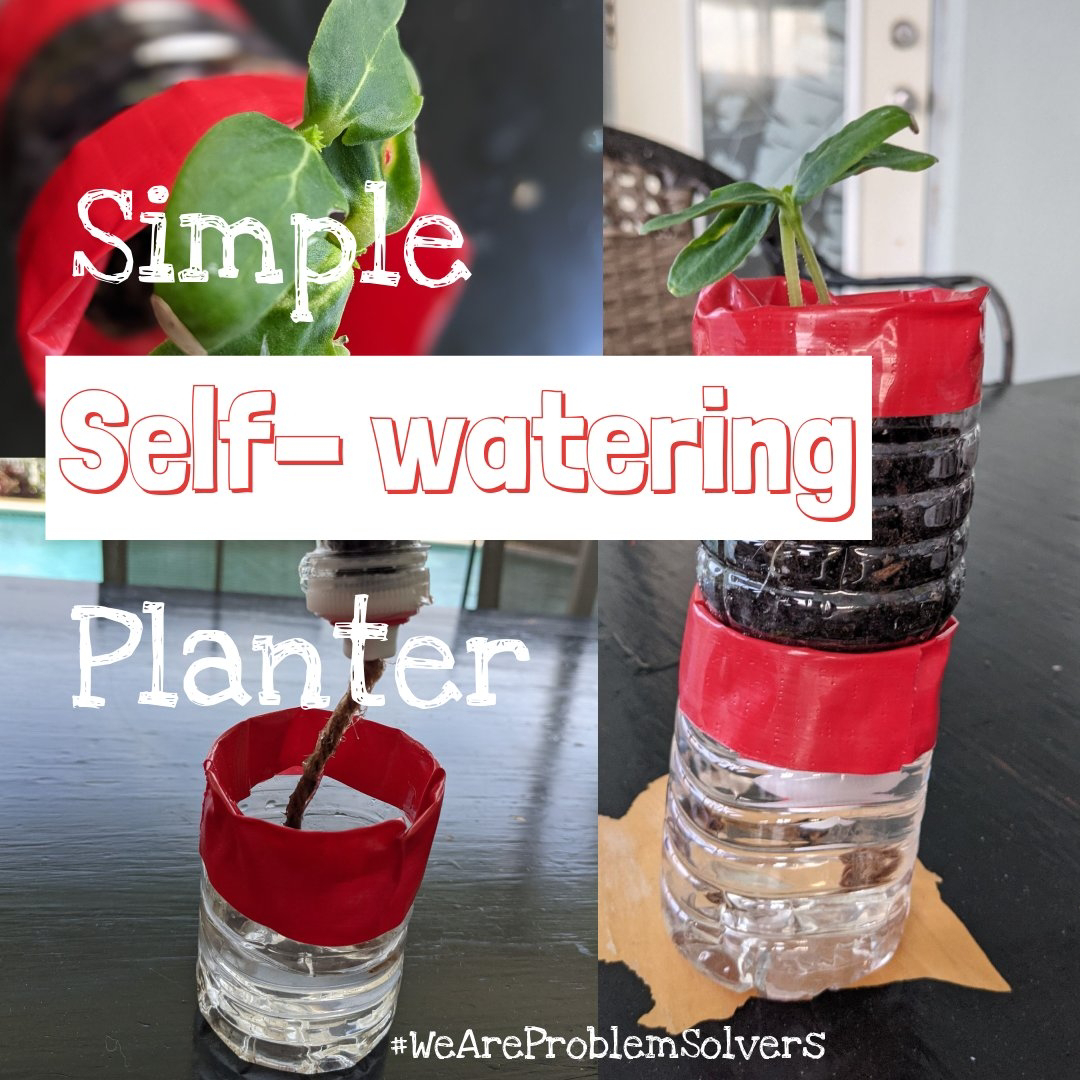Our 5 Senses - and Plants!
A garden can be a feast for the senses.
Let's explore the plants in our gardens with our senses, then explore how plants sense their environment.
Smell
Some plants smell beautiful, like this rose.
We smell with our nose.
Here are some cards we made with a picture of a nose, the word nose, and the word smell.
Touch
Some plants feel soft, like this silver ragwort (Jacobaea maritima).
We touch with the skin on our fingertips. Here are some cards we made to learn the words skin and touch. We drew a hand with skin, and wrote the words skin and touch.
Some plants taste remarkable, like this tart little lime.
And like the deliciously spicy peppers that grew on the International Space Station. (Images.nasa.gov) Here is a photo of Astronaut Megan McArthur with a space taco that she made with space-grown peppers. (Images.nasa.gov) We taste with our mouth. Here are the cards we made for taste.
SeeIt's fun to see flowers with high contrast like these creamy yellow flowers with dark brown accents on three of their six petals. This is Dietes bicolor, also known as African yellow iris.
We see with our eyes. Here are the cards we made with a picture of eyes, the word eyes, and the word see.
When we listen in our garden, we hear birds. What birds do you hear in your garden?
A flock of ibis visited our garden today. They enjoyed picking at the ground for bugs. Here is a photo of an Ibis taken at Kennedy Space Center, from the NASA image gallery.
Here is a video that shares 3 minutes of white ibis bird songs and calls from Planeta Azul, on YouTube: https://youtu.be/PreZfB74rjA
Would you like to become better at identifying birds by their calls? Here is a link to an article with tips.
Crunch!
We found some fallen leaves. Such a satisfying experience to hear and make that crunch with fallen leaves.
We hear with our ears. Here are the three cards we made for hearing.
Sensing in PlantsWe humans can see, hear, smell, taste, and touch. Did you know that plants have senses, too?
Photo
Plants don't have eyes, but they do have photoreceptors, which allow them to notice and respond to light.
Check out this 3D model of a phytochrome from the Protein Data Bank. You can twist it around to see it from every angle. https://pdb101.rcsb.org/learn/structural-biology-highlights/phytochrome
Mechano
Plants don't have ears, but they do have mechanoreceptors which are sensitive to sound waves, and they can grow in response to noise.
Want to read an open-access scientific paper that reviews past work with sound perception by plants? Here is a link. https://www.frontiersin.org/articles/10.3389/fpls.2018.00025/full
Chemo
Plants cannot smell or taste, but they can pick up volatile chemical signals, and adjust their growth accordingly. Want to learn more about a plant that can smell? Here is a fun illustrated explanation from Kurlwich Wonders on National Public Radio. https://www.npr.org/sections/krulwich/2012/05/24/153583873/do-plants-smell-other-plants-this-one-does-then-strangles-what-it-smells
Thigmo
Even though a plant doesn't have skin like us, it has a sense of touch! When the tendril of a pea plant touches a pole, it twists around it to climb higher. When we pet the leaf of a sensitive plant (Mimosa pudica) the leaves close up on themselves. Here is a link to a video made by a slow motion videographer (not me!) that shows the motion of a sensitive plant: https://youtu.be/LuOGOQ_vnDo
Tropisms
Tropism is the general term for a plant's response to stimulus. Thigmotropism is the response of plants to touch. Phototropism is the response of a plant to light. Chemotropism is the response of a plant to chemicals. Gravitropism is the response of a plant to gravity. When a plant cannot sense gravity, it can still react to light, touch, and chemical signals.
Simple Gravitropism Experiment
Do you have a house plant? Pick up the pot and put it on its side someplace dark. Leave it there for a few hours, maybe even overnight. Then come back and check on your plant. Has it adjusted its growth? It looks funny, doesn't it?
Don't worry, just put back upright and it will adjust again.
Here is a photo of our little houseplant Syngonium just after it was placed on its side. I wrote the word gravitropism on a card and placed it in front of the plant for the children to discover. Before I set the plant on its side, I placed a small straight bamboo skewer in the pot so I would have a reference for what a straight stem would look like.
After 7 hours, here is how much the plant has changed:
Update: after 20 hours here's our close-up.
After 30 hours, our experiment is complete. We put the plant back upright. Here is a comparison of before and after.
What a dramatic difference!
Space - No
Did you know that I was part of a group that grew plants in space, on the Shuttle Discovery? We grew plants from seed - in the dark - for 2 weeks in space - and we saw how they compared to plants grown on Earth.
The plants looked like a bowl of spaghetti when they got back to Earth. Let me find a picture for you. (I will come back to add this)
Here's a link to a publication about my work.
You can view all of the pictures we took of the plants when they got back to Earth. You can even look at the raw transcriptomics and glycomics data. Check them out in the NASA Open Science Data Repository. Here is a link to the study page! https://osdr.nasa.gov/bio/repo/data/studies/OSD-121
Want to explore other plant research that was done in space? Check out SALAD! They're a team of students who are making a site so you can learn all about plant research in space - and they want it to be easy for a younger crowd to read and use - like average high school and undergraduate students. Check it out!
Paper Circuit
Our friend made a really great activity with gravity sensing paper circuits, which she shared in her blog!
Here's an image from the activity.
Check out this activity here: https://nearspacebiology.home.blog/2023/04/24/how-to-build-a-plant-gravity-sensor-paper-circuit/
Other Plant Lessons
Do you want to explore some of our other lessons with plants?
Here are some links!





















Comments
Post a Comment